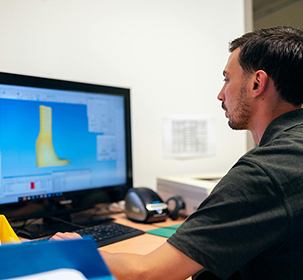
Engineering Science A.S.
This program provides students with foundational knowledge in engineering, preparing
them for further studies at a four-year institution. In this program, you'll focus
on a concentration of your choice from Aeronautics, Civil, Industrial, Mechanical
& Nuclear, Chemical, Computer, or Electrical Engineering. The program is affiliated
with TYESA and AECNYS and ensures a comprehensive curriculum that includes calculus,
chemistry, and physics.
ASSOCIATE IN SCIENCE
After SUNY Ulster
This program is designed for students who want to transfer to earn their four-year degree. Many SUNY Ulster graduates have transferred as juniors to colleges such as SUNY ESF, SUNY Plattsburgh, and SUNY New Paltz, as well as many private institutions such as RPI and Rochester Institute of Technology.

Course Info
Paying For College
Employment Potential
Graduates of the program who then go on to earn a baccalaureate or higher degree will
be qualified for professional positions in their fields of concentration.
- Engineer in Area of Concentration
- Engineering Technician
- Research Assistant
- Quality Control Technician
Explore More Programs
Explore more programs in the Technology Pathway until you find the one that’s right for you.
Get in Touch
Reach out to our Enrollment & Success team today if you have any questions.
phone icon
(845) 687-5022
email icon
admissions@sunyulster.edu
